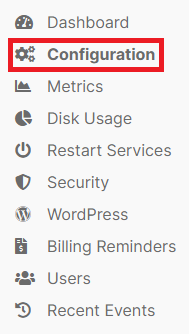Enabling Remote MySQL Access
First, make sure you have followed our guide on how to add your IP to the servers Allows IP List.
From the dashboard, click on Configuration.

Click the Enable button from within the Remote MySQL Access section.

Updated 5 months ago
